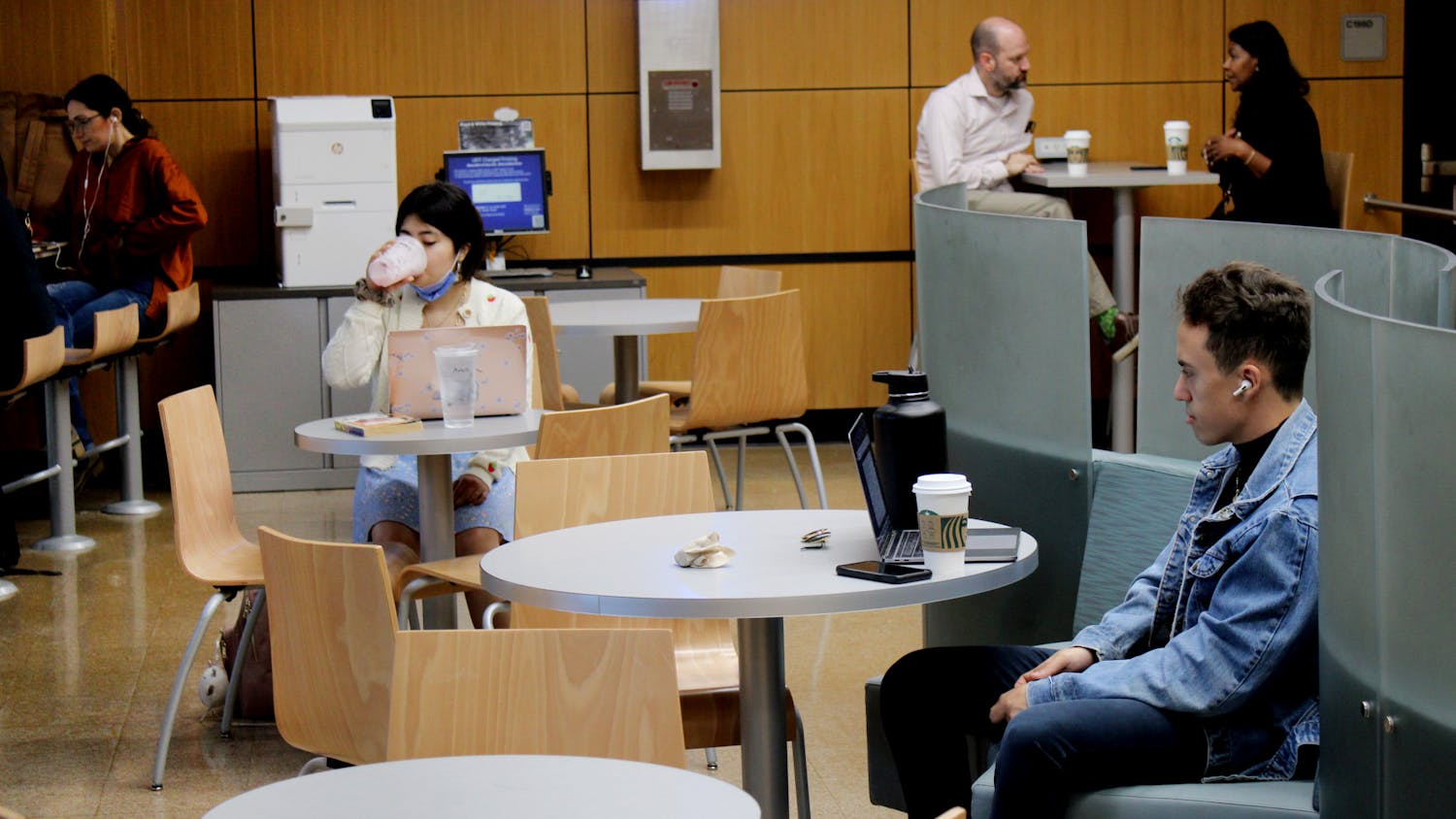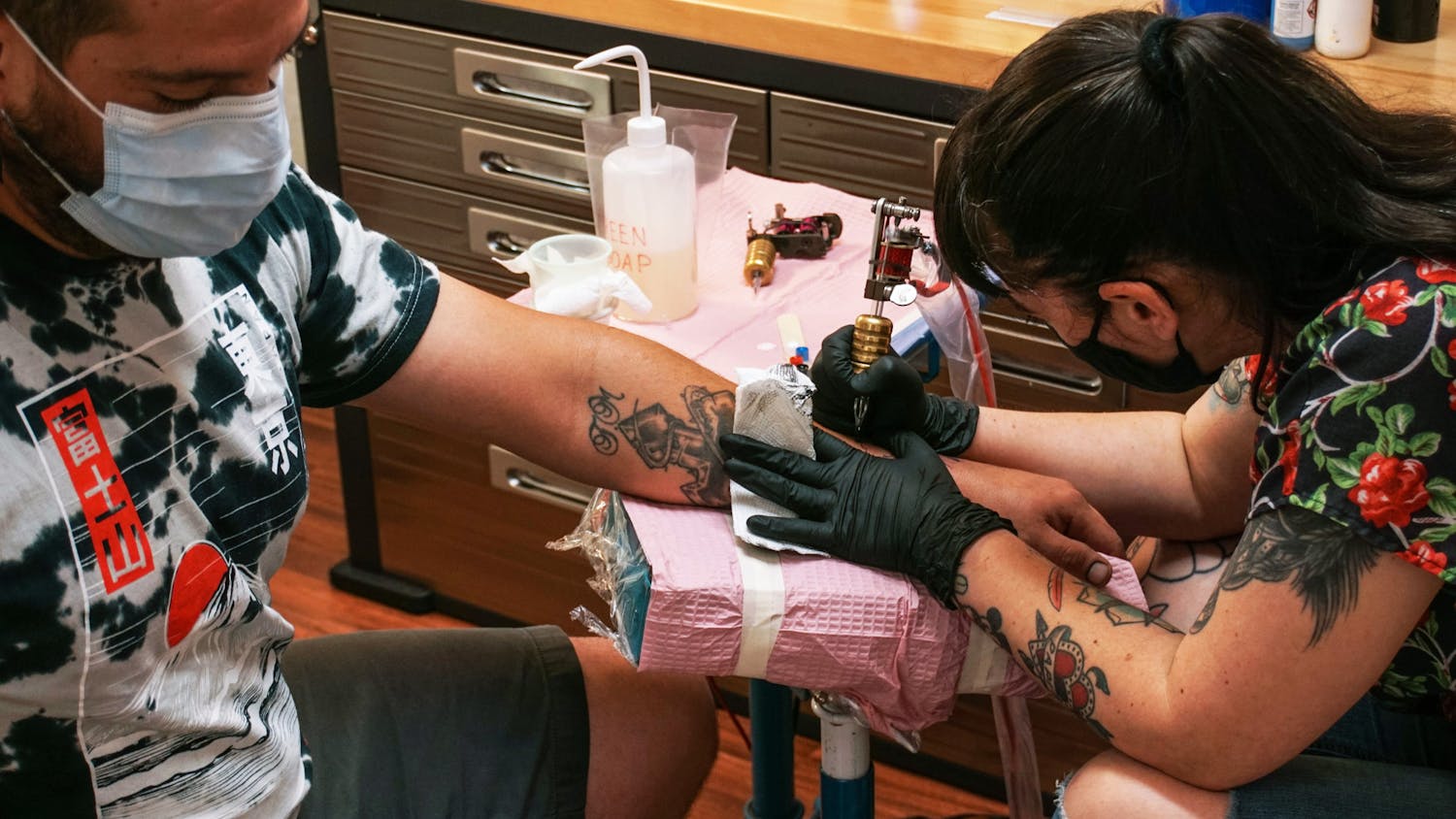The story of how Phil Gaimon got a tattoo of a big, blue bar of soap on his right bicep starts like most late-night adventures — with a bad decision.
In mid-September of last year, the 25-year-old professional cyclist finished his first USPRO Road Race National Championship in Greenville, S.C., with new team Kenda/5-hour Energy.
After almost five hours in the saddle, Gaimon landed in a distant 34th-place finish behind other top Americans like Levi Leipheimer, George Hincapie and Chris Horner. The race was far from his finest performance of the season, but that wasn’t what ultimately drove him to a local tattoo parlor the next night.
Just two days prior, news hit the Internet that longtime friend Jon Chodroff had admitted to the purchase and use of the performance-enhancing drug EPO.
EPO, or erythropoietin, allows more oxygen to be carried in the blood stream.
Then in his second year of racing since graduating from the University of Florida, Gaimon knew it was only a matter of time before he was confronted with the reality of cheating in his sport.
But this was someone he was close to, a former teammate with Jelly Belly Pro Cycling. The truth stung even deeper when Chodroff, 25, was levied a two-year suspension by U.S. cycling’s governing body and immediately retired from the sport.
Gaimon couldn’t let the same thing happen to him. Chodroff was a good guy and a great friend. If he doped, it could happen to anyone.
“Right now, I think I’d never want to dope but what if I made it to Europe? What if something tries to change my mind?” Gaimon asked himself.
So along with teammate Nick Waite, he walked into the Tattoo Wearhouse in nearby Spartanburg and asked for a simple design he’d been working up the courage to get since January, when a doctor asked if he was doping.
In big, bold letters inside the outline of a still-sudsy bar of soap sits the word “CLEAN” for the entire cycling world to see.
Today, Gaimon — along with Waite and former pro Adam Myerson — continues to try and make a positive impact on his sport’s doping problem by running a donation-based website called CleanAthletes.com. The non-profit site helps raise money to buy young, up-and-coming cyclists the same “CLEAN” tattoo the three of them now have.
“If one of them gets it, then this kid will never dope, because the rule is if you get the tattoo and you dope, then we come scrape it off you,” Gaimon said.
Since the site started in October 2010, and through Gaimon’s promotion on his blog for the cycling magazine VeloNews, he said at least five other riders have gotten the same ink.
But his current teammate at Kenda/5-hour Energy and former UF cycling club member, Bobby Sweeting, 24, was initially surprised on just how far his friend took the message.
“I was shocked that he did that,” Sweeting said. “I didn’t really think of him as the kind of guy who’d go and get tatted up. … I love to talk about it on my website and on social media, with the fans and stuff like that, but a tattoo is a little much, man.”
Long before he was a crusading anti-doper and cycling pro, Gaimon was a self-described fat kid who played way too many video games and weighed 185 pounds his junior year of high school.
Unlike other racers like Sweeting, who were either running track or on the bike at an early age, Gaimon didn’t grow up as an athlete. The only sport he had ever played up to high school was a year of soccer — as a goalie.
It wasn’t until he came to UF and started to train on his first road bike that he finally lost weight and got into shape. When he started racing competitively with Team Florida, Gaimon quickly found he was a natural.
“Phil is an anomaly for sure,” Sweeting said. “He went from sitting on his ass to a [Category] 1 racer in like a year, which is pretty unheard of.”
In exactly 11 months, Gaimon rose from a beginner Category 5 cyclist to a certified professional, the fastest upgrade of any domestic rider since the system was established.
He signed his first major pro contract in 2009 with Jelly Belly.
“He progressed physically really well, but he’s also a student of the sport unlike other people who just race,” said David Reich, who is a current member of Team Florida. “He is really interested in learning everything about it. He loves the sport, absolutely loves it at every level.”
At 6-foot-1 and now a mere 148 pounds, Gaimon also defied the odds by becoming a climbing specialist in the mountains for his new team, even though he began his career training on Florida’s flat terrain.
In three years as a pro he’s notched 30 stage, jersey competition and overall race wins while competing in some of the top domestic races each year like the Tour of California and the Tour of the Gila.
“It’s true there’s no climbing in Florida, there’s no altitude, but they have great weather,” Gaimon said. “So I have the advantage that I don’t get snowed in for two weeks in January like the guys in Colorado. But people still ask me how I can climb that well coming from Florida. I tell them I train on Space Mountain. That usually works.”
Now on his sixth post-collegiate team and with a new contract extension through 2012, Gaimon wants to make the jump into bigger stage races internationally.
With Kenda/5-hour Energy expanding into a competitive team in Europe within the next five years, Gaimon will need strong results to remain a part of the growing program.
“My mom still thinks it’s a phase or something,” Gaimon said. “And she might be right, if I don’t get a good offer in a year or two, I could easily be in grad school. Until you’re at a certain level, that’s the only responsible way to look at it.”
In the past, most fledgling or insecure riders were able to advance or just stay afloat in cycling through rampant cheating.
Along with EPO, athletes use human growth hormones (HGH), amphetamines, steroids and even wholesale blood transfusions to gain a competitive advantage.
“If one out of 10,000 racers dopes, he’s going to rise to the top because it works so well for cycling,” Gaimon said. “So it kind of attracts the garbage and you end up hearing about those guys a few years later when they get caught.”
But the systemic doping has ultimately backfired financially for cyclists. During their young careers, Gaimon and Sweeting have both noticed a trend of wealthy, non-industry corporations backing out of their sponsorships.
The scandals of the last 10 years surrounding Floyd Landis, Operation Puerto and multiple Grand Tour champions Alberto Contador and Lance Armstrong, have in the words of Gaimon, “drug sponsors’ names through the dirt,” leaving lesser-funded cycling companies’ sponsors to pick up the slack.
If the trend continues, he believes the sport could collapse.
“It used to be you’d meet someone 10 years ago and you’d say you’re a pro cyclist and it’d be ‘Oh that’s cool,’” Gaimon said. “Now you meet someone and they look at you kind of weird because they watched 60 Minutes. They just assume.”
Currently living in Ellicott City, Md., and traveling around the country for races, Gaimon looks to athletes from other sports that have survived and moved past a cheating culture.
“I’ve met the gold medalist for the Nordic combined in the last Winter Olympics. He (Bill Demong) rides bikes, too, and you ask him about doping in skiing and he says there isn’t anybody. Nobody does it anymore,” he said. “The only reason he doesn’t have to consider it is because he doesn’t have to, nobody dopes.”
Though Gaimon believes science and desperate riders will always try to push what is fair and legal in the sport, he said he has noticed the doping problem, at least domestically, is improving simply because he is able to stay competitive in the races he enters.
Like Sweeting, most young cyclists from Gaimon’s generation respect and understand the point he’s trying to make with his “CLEAN” tattoo. While some of the older breed of riders might not like it, for most, it’s a reminder of the commitment they’ve made to improve their own abilities through honorable, hard work.
In the end, Gaimon doesn’t think all dopers are bad people for one lapse in judgment. Some of them were and still are his friends. And when he’s honest with himself, he still isn’t 100 percent sure of his own resolve until the day comes that it’s actually tested.
He just wants to hold onto the only sport he’s ever loved for as long as he can.





